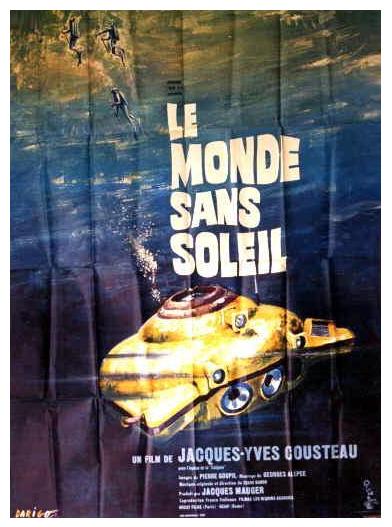Film Review: Le Monde Sans Soleil
Le Monde Sans Soleil documents an experiment with men living underwater as “oceanauts” in a pair of underwater capsules named Conshelf Two (from Contintental Shelf Station Two) in the Red Sea. This in and of itself supplies the foundation for an amazing documentary. Additionally, there is a diving saucer with an underwater garage.
The film is from 1964, and diving technology has improved since Le Monde du Silence in 1956. Now there are wetsuits (awesome silver ones) and weight belts. In the lower capsule, at about 26 meters, the men breathe tri-mix (Helium, Oxygen and Nitrogen). In the shallower capsule at about 10 meters, the men breathe air and smoke pipes.
While there is plenty of footage of marine life, the film concerns itself primarily with the oceanauts and their fancy equipment. A future is envisioned in which Conshelf Two is merely the first step in man’s undersea colonization, where we can “systematically exploit all the resources of the oceans.” While this phrase is jarring to the modern audience, overall the scientific research techniques are less violent and destructive in this film. No dynamite is used.
Without Louis Malle, this film is not quite as strong artistically as Le Monde du Silence, but the various undersea structures make for mesmerizing footage. The grand finale is a descent in the diving saucer to 1,000 feet below sea level, passing thousands of years of ancient corals into a world where light barely reaches.
It’s another must-watch film that is just a cut below Le Monde du Silence. While the US and USSR were in the heat of the space race, Cousteau was undertaking his own verison in the ocean. While saturating diving and undersea habitations are used now in commercial diving, undersea colonization never really took off. Still, it is fascinating to see the oceanauts lay the foundation for this colonization in a time when it seemed like a perfectly logical thing to do.

